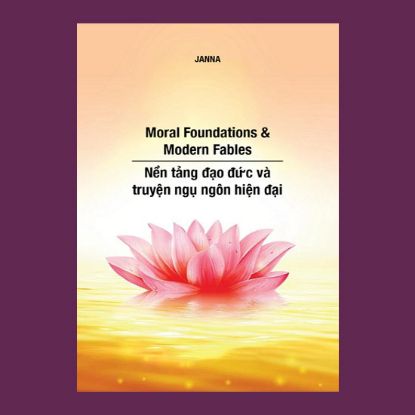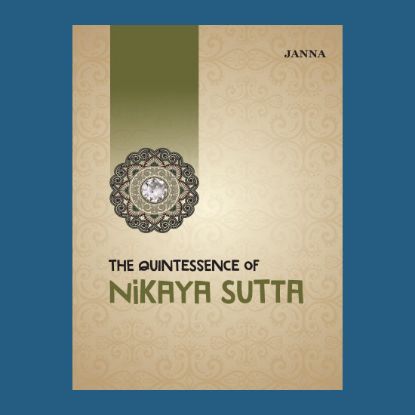You have no items in your shopping cart.
Filter by price
Books
A PROPER WAY TO MEDITATE
The supreme goal of meditation in Buddhism is to reach the state of non-ego–non-self, liberation, and enter Nirvana. Through meditation, the Buddha became a Perfectly Enlightened One. Meditation concentrates our minds, making them calm, mindful, and free of delusions. It especially helps destroy our egos and ignorance to attain liberation and enlightenment. ...
$0.00
AN EXPLANATION OF DIAMOND SUTTA (VAJRA SUTTA)
Diamond Sutta belonged to the Mahayana doctrine system. Another sutta named by the Buddha in Sanskrit was the Vajra-Prajna-Paramita Sutta. The Mahayana doctrine system emerged two hundred to six hundred years after the Buddha entered Nirvana. Many doctrines reached their climax in Mahayana, such as Lotus Sutta and Nirvana Sutta (Mahaparinirvana Sutta), which appeared six hundred years after the Buddha entered Nirvana. Other Pure Land School and Tantric School doctrines emerged one thousand years after the Buddha entered Nirvana. Thus, the Diamond Sutta predated any of them. Although the Diamond Sutta belonged to the Mahayana system, this Sutta was closely aligned with the Hinayana thought. Therefore, the scenes in this Sutta were described as simply as those in the Hinayana doctrines...
$0.00
Moral Foundations & Modern Fables
People need many things, such as money, positions, families, children, etc. However, all wishes may collapse because of a lack of moral foundation. Immoral people live selfishly, using their talents and power to benefit themselves. They even don’t mind hurting others or harming society. Therefore, people must re-educate in morality to know their responsibilities to others and society. This book, Moral Foundations & Modern Fables, includes articles on basic concepts, trends, and levels of morality to provide readers with an objective overview of human morality. Furthermore, standards of morality and methods of moral cultivation, from simple to sophisticated, are presented briefly and comprehensibly so that everyone can apply them to their lives...
$0.00
Self-development through the Eightfold Path
There are many ways to learn the Buddha’s teachings, and the author’s method is one of the various ways to practice Buddhist lessons. Although this is a piece of work, it is pregnant with her experience in studying Buddhist philosophy. I am sure that if a person like her is going on the path to Buddhism and gains knowledge of the Buddha’s teachings, then her labor will be perfect.
$0.00
The Quintessence of Nikaya Sutta
Nikaya Sutta was orally handed down in the first period of hundreds of years. After the Buddha passed away, the First Collection of Suttas was held in the cave Sattapanna, Vebhara Mountain, Rajagaha City, Magadha country1. About one hundred years later, the Elder Yasa2 Assembled the Suttas for the second time. One hundred years after the Second Collection, King Ashoka held a meeting of the Collection of Suttas for the third time. Until the time of King Ashoka, the Suttas were written in Pali. The long-term transmission by word of mouth must have missed something. It was natural. However, the errors in the Suttas were insignificant. A sociologist once proved some missed transmission by his experiment. He told a short story in the first person. Then, he observed that his story was told repeatedly to many people. When it came to the fiftieth, it was completely different from his first telling...
$0.00
A GUIDEBOOK FOR LAY PRACTITIONERS
Question 01: DO LAY PRACTITIONERS FACE GREATER CHALLENGES IN FOCUSING ON SPIRITUAL PRACTICE COMPARED TO MONASTICS DUE TO FAMILY LIFE CONSTRAINTS? Answer: Indeed, family life can present more obstacles to spiritual practice than monastic life. This is one of the reasons why all religions incorporate a monastic tradition dedicated to intensive, focused practice and preservation of teachings. However, circumstances are not always fixed. There may be times when monastics face challenges due to external factors, necessitating lay practitioners to intensify their practice to uphold and safeguard the teachings of their faith. Question 02: LAY PRACTITIONERS MUST EARN A LIVING AND INTERACT WITH MANY NON-PRACTITIONERS IN SECULAR SETTINGS. CAN THIS EASILY LEAD TO CONFLICTS AND CHALLENGES THAT HINDER SPIRITUAL PRACTICE TOWARD ENLIGHTENMENT AND LIBERATION? Answer: Undeniably, this situation reflects the karmic conditions that have led us to circumstances that are challenging for practice, compelling us to cultivate our spirituality within a lay life full of constraints, conflicts, and concerns. However, if we persist in diligent practice despite these difficult circumstances, we cultivate the potential for more favorable conditions for practice in future lives. This presents a significant test for Dharma. If there's a shortage of monastics, and lay practitioners' efforts weaken, the Dharma may struggle to endure. Considering the long-term preservation of the Dharma, we must strive earnestly in our lay practice while also actively supporting brethren in similar situations, enabling collective progress on the path. (*) The Buddha's definition of enlightenment is very profound. Even if one can enter a deep state of meditative absorption, this is only considered a meditative achievement, but it is not regarded as true enlightenment or attaining a stage of sainthood. True enlightenment, or Sainthood, is achieved only when one eradicates the deep-seated invisible defilements, known as fetters (kilesas), within the deepest layers of the mind. Fetters are the natural instincts of sentient beings that influence all thoughts and behaviors. These include inclinations such as selfishness, arrogance, greed, anger, amour propre, hatred, stubbornness, laziness, cowardice, blame-shifting, fear and at the deepest level of mental fetters, ignorance (Avidyā). The Buddha identified four stages of Sainthood: Sotāpanna (Stream-enterer), Sakadāgāmi (Once-returner), Anāgāmi (Non-returner), Arahant (Fully Enlightened One). The concept of enlightenment in Buddhism is extremely profound and intricate, requiring significant spiritual practice to fully grasp its meaning.
$0.00
- 1
- 2








